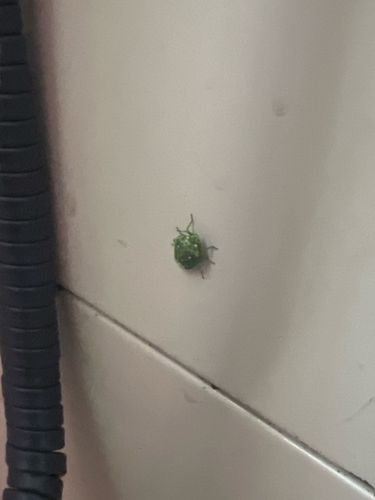Green Stink Bug
Scientific Name: Chinavia hilaris (formerly Acrosternum hilare)
Order & Family: Hemiptera, Pentatomidae (Stink bugs)
Size: Typically 12-19 mm (0.5-0.75 inches) in length.

Natural Habitat
Found in various habitats including gardens, agricultural fields, orchards, and woodlands, preferring areas with lush vegetation.
Diet & Feeding
Primarily herbivorous, feeding on a wide range of plants, including fruits, vegetables, and ornamentals. They use their piercing-sucking mouthparts to feed on plant sap, seeds, and developing fruits.
Behavior Patterns
They are active during the day. When disturbed, they can emit a foul-smelling liquid from glands on their thorax as a defense mechanism. Females lay clusters of barrel-shaped eggs, usually on the underside of leaves. Nymphs (immature stink bugs) go through several instars, resembling smaller, wingless versions of the adults.
Risks & Benefits
Potential risks include being significant agricultural pests, causing damage to crops like tomatoes, beans, corn, and fruit trees, leading to blemishes, deformities, and decreased yield. They are not harmful to humans directly but can be a nuisance if they enter homes. Benefits are primarily as a food source for other predators (birds, spiders, parasitic wasps) in the ecosystem.
Identified on: 10/15/2025